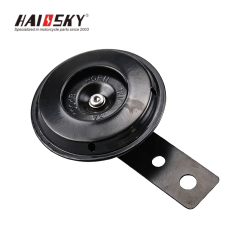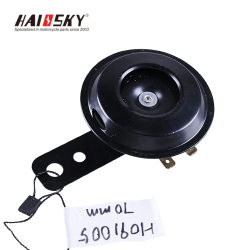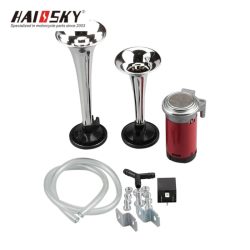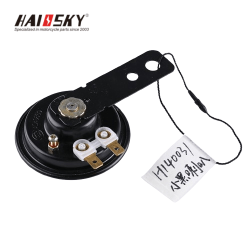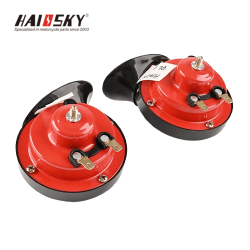OEM Motorcycle Parts
Category: Motorcycle Horn & Flasher
The Ultimate Guide to Motorcycle Horns & Flashers: Everything You Need to Know
When it comes to motorcycle safety and communication, the motorcycle horn & flasher are two of the most essential components. The horn alerts other road users to your presence, while the flasher ensures your turn signals work properly, making your intentions clear on the road. For B2B wholesalers and motorcycle enthusiasts, understanding the purpose, types, and maintenance of these components is crucial. In this guide, we’ll dive deep into everything you need to know about motorcycle horns and flashers, while optimizing for the keyword “motorcycle horn & flasher” to help you make informed decisions for your business or customers.
What is a Motorcycle Horn?
A motorcycle horn is a safety device used to alert other road users of your presence or to convey a warning message. It’s an essential accessory that helps prevent accidents by ensuring you can communicate effectively in traffic. Motorcycle horns come in various types, each designed to meet specific needs and preferences.
Types of Motorcycle Horns
1. Electric Horns
Electric horns are the most common type of motorcycle horn. They use an electric current from the motorcycle’s battery to power a sound-producing unit. When the horn button is pressed, the current triggers a coil that vibrates a metal diaphragm, producing sound waves. Electric horns are available in different sound levels, typically ranging from 70 to 120 decibels.
2. Air Horns
Air horns produce a loud, attention-grabbing sound using compressed air. They are ideal for larger motorcycles and riders who need a powerful horn to cut through traffic noise. Air horns can exceed 130 decibels, making them significantly louder than electric horns. However, they require more power and are often bulkier.
3. Bulb Horns
Also known as squeeze horns, bulb horns are hand-operated and use a rubber bulb to force air through a reed valve, producing sound. They are simple, inexpensive, and don’t require electrical connections. However, their sound level is relatively low (60-80 decibels), making them less effective in noisy environments.
4. Dual-Tone Horns
Dual-tone horns feature two sound-producing units tuned to different pitches, creating a richer and more attention-grabbing sound. They are particularly effective in urban environments where they need to stand out amidst traffic noise.
5. Musical or Novelty Horns
These horns produce unique sounds or tunes, adding a fun element to your motorcycle. However, they are not a substitute for traditional warning horns and must comply with local sound level regulations.
What is a Motorcycle Flasher?
A motorcycle flasher, also known as a turn signal relay, is a device that controls the blinking rate of the turn signals. It ensures that your turn signals flash at a consistent rate, making your intentions clear to other road users. A faulty flasher can cause the turn signals to blink too fast, too slow, or not at all, compromising your safety on the road.
Should Motorcycle Riders Use Their Horn?
Yes, motorcycle riders should use their horn to alert other road users of their presence, especially in situations where visibility is limited or when another driver may not see you. However, horns should be used responsibly and not excessively, as they can startle or annoy other road users.
What is the Loudest Horn for a Motorcycle?
The loudest horns for motorcycles are typically air horns, which can exceed 130 decibels. These horns are ideal for riders who need a powerful warning signal in noisy environments. However, they require more power and space compared to electric horns.
Can You Use Hand Signals Instead of Blinkers on a Motorcycle?
While hand signals can be used as a backup, they are not a substitute for functional turn signals (blinkers). In many regions, using hand signals alone may not comply with road safety regulations. Always ensure your motorcycle’s turn signals are working properly and use hand signals only as a supplementary measure.
Can I Put a Train Horn on My Motorcycle?
While it’s technically possible to install a train horn on a motorcycle, it’s not practical or legal in most cases. Train horns are extremely loud and bulky, and they may not comply with local noise regulations. Additionally, they require a significant amount of power and space, which most motorcycles cannot accommodate.
What Does It Mean When a Motorcyclist Taps His Helmet at You?
When a motorcyclist taps their helmet, it’s often a signal to other riders or drivers to alert them of police or speed traps ahead. It’s a form of non-verbal communication used within the motorcycling community to promote safety and awareness.
Why Do Motorcycle Riders Put Two Fingers Out?
The “two-finger wave” is a common gesture among motorcyclists to acknowledge each other on the road. It’s a sign of camaraderie and mutual respect within the riding community.
Maintenance Tips for Motorcycle Horns & Flashers
To ensure your motorcycle horn and flasher function properly, follow these maintenance tips:
Regular Inspection: Check the horn and flasher for signs of wear, corrosion, or damage.
Clean Electrical Connections: Keep the terminals clean and free from corrosion.
Test Functionality: Regularly test the horn and turn signals to ensure they are working correctly.
Secure Mounting: Ensure the horn and flasher are securely mounted to prevent vibrations from loosening connections.
Follow Manufacturer Guidelines: Adhere to the manufacturer’s maintenance schedule for your specific motorcycle model.
How to Choose the Right Motorcycle Horn & Flasher
When selecting a horn or flasher for your inventory or customers, consider the following factors:
Compatibility: Ensure the horn and flasher match the motorcycle’s make, model, and electrical system.
Sound Level: Choose a horn with an appropriate decibel level for the riding environment.
Durability: Opt for weather-resistant or waterproof models to ensure longevity.
Ease of Installation: Select horns and flashers that are easy to install and come with all necessary mounting hardware.
Brand Reputation: Stick to reputable brands known for producing reliable and durable components.
How to DIY and Replace a Motorcycle Horn & Flasher
Replacing a motorcycle horn or flasher is a straightforward process. Here’s a step-by-step guide:
Tools Needed:
Screwdriver set
Socket wrench
Electrical tape
Steps:
Disconnect the Battery: Start by disconnecting the negative terminal of the battery to prevent electrical shorts.
Remove the Old Horn/Flasher: Locate the horn or flasher, disconnect the wiring, and unscrew the mounting bolts.
Install the New Horn/Flasher: Connect the wiring to the new horn or flasher and secure it in place with mounting bolts.
Reconnect the Battery: Reconnect the battery and test the new horn or flasher to ensure it’s functioning properly.
FAQs About Motorcycle Horns & Flashers
Q: What is the legal requirement for motorcycle horns?
A: Most regions require motorcycles to have an audible horn with a minimum sound level, typically around 80-120 decibels.
Q: Why is my motorcycle horn not working?
A: Common causes include a dead battery, loose connections, damaged wiring, or a faulty horn.
Q: How should a motorcycle horn be maintained?
A: Regularly inspect and clean the horn, ensure secure mounting, and check electrical connections for corrosion.
Final Thoughts
The motorcycle horn & flasher are essential components that ensure your safety and communication on the road. By understanding their purpose, types, and maintenance requirements, you can keep your customers’ motorcycles performing at their best. At Haissky.com, we offer a wide range of high-quality horns and flashers to meet the needs of B2B wholesalers and riders alike. Explore our catalog today and keep the roads safer!


